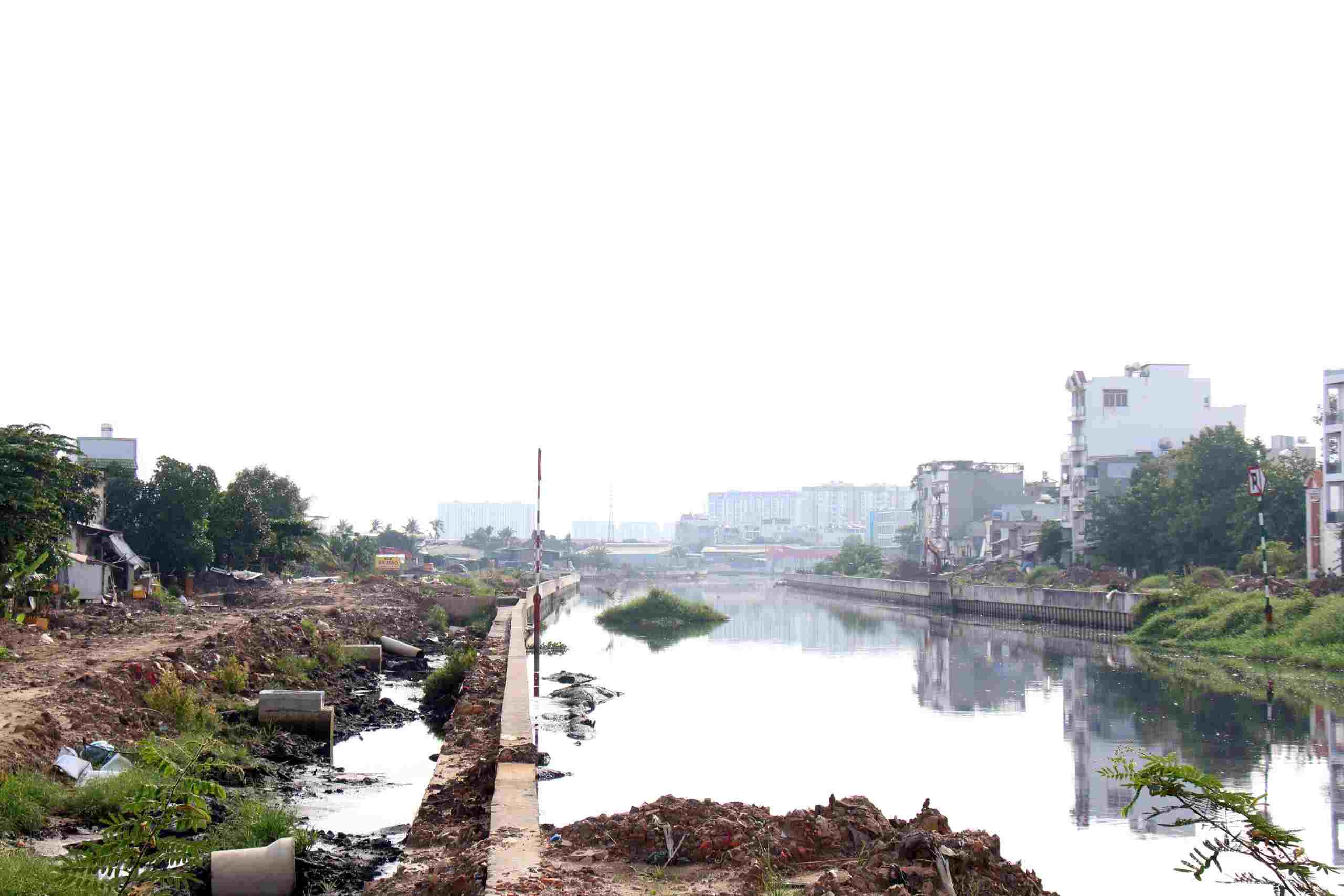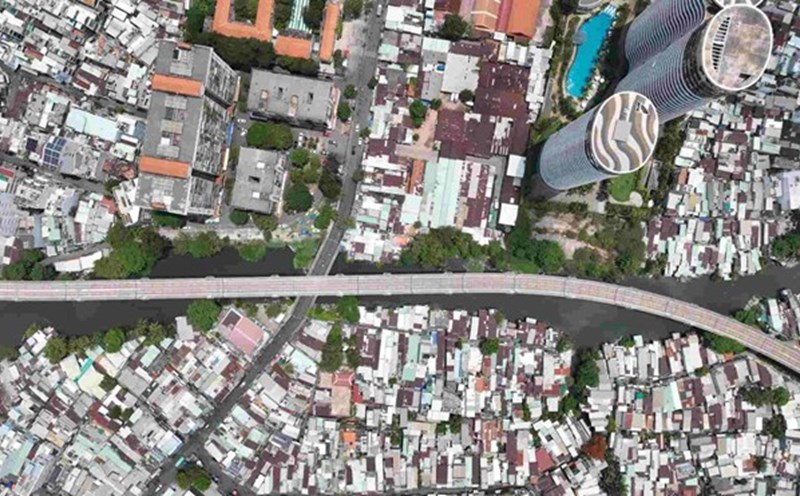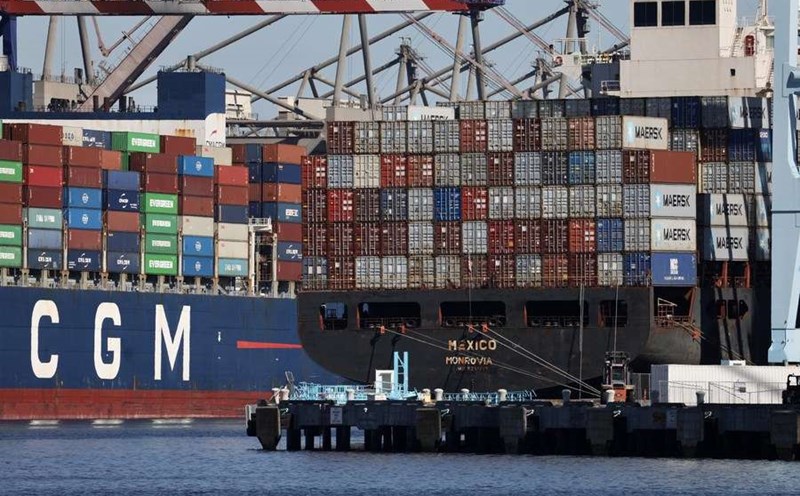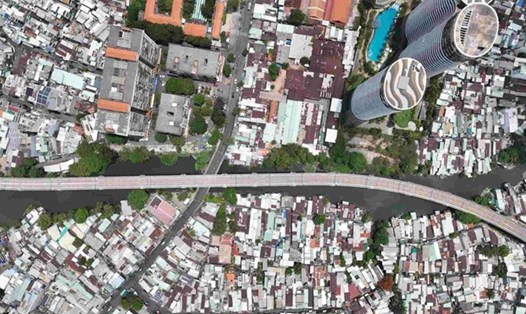Newly opened 4.3km of canal road
It is noted that at many construction sections of the project, it is easy to see the image of the construction site still messy and lacking the regular presence of the contractor. Along the canalside roads, construction materials, sewers, and mud are piled up, scattered on the residential road, affecting the living environment of the people.
In the area from Cho Cau bridge to Truong Dai bridge (old Go Vap district), mud was piled up from the canal bed, piled up along the shore, some places were nearly 2 meters high. Due to being left for a long time, overgrown with grass, and waste began to appear. Many households have to proactively put up "no dumping" signs to maintain hygiene in the area in front of their houses.
Mr. Nguyen Van Thanh - a resident living along the canal for the past 50 years, shared: "At first, people were very happy when the project started, hoping that the urban appearance would improve. But now I am disappointed because the construction is too slow, the mud is lying there all year round, the garbage is stinking, no one is handling it".
People in the old Tan Binh district also reported a similar situation, even in some places where contractors have stopped construction for many weeks, without erecting barriers to protect the safety of the construction site.
The Tham Luong - Ben Cat - Nuoc Len canal infrastructure construction and environmental improvement project started in early 2023, with a total length of more than 63km; dredging 31.46km of canals; building 63.41km of roads on both sides of canals.
The total initial investment capital was VND 8,200 billion, then adjusted to VND 9,000 billion by the end of 2024, the implementation period will last until 2026.
However, after more than 2 years of construction, by the end of April 2025, the project had only opened about 4.3km of canalside roads - a very small number compared to a total length of more than 63km.
According to the report of the Ho Chi Minh City Urban Infrastructure Construction Investment Project Management Board ( urban Infrastructure Board - investor), the progress of the entire project has only reached about 49.43% by the end of May 2025.

Many contractors are slow to construct and are fined
Looking at the reality at the site, the investor's goal of completing the project by the end of this year is a very difficult goal to achieve.
According to Mr. Dau An Phuc - Director of the Urban Infrastructure Board, many construction items are currently behind schedule compared to the plan. Although the investor has continuously urged and sent reminders, requesting the contractor to ensure construction progress and quality, the delay still occurs. Some contractors have been administratively sanctioned for violating contract progress.
Hai Dang Joint Stock Company constructed packages XL-03, XL-04, XL-05 and was fined a total of more than VND 680 million. Hoang Ngan Transport Construction Joint Stock Company was fined nearly 32 million VND in the XL-05 package.
Many other units were also reminded and notified of breach of contracts such as: Cong Chanh Traffic Construction Joint Stock Company, Hai Duong Rural Development and Embankment Construction Joint Stock Company, 559 Investment Joint Stock Company, Seafood Construction and Installation Joint Stock Company II...
According to Mr. Phuc, although most of the project's land has been prepared since phase 1 (implemented since 2002), there are still 15 cases in Binh Thanh, Binh Tan districts and Binh Chanh district that have not yet handed over the land despite compensation. Some have re-offended the project.
The scarcity of construction materials such as sand and stone also affects the construction progress. The investor has requested contractors to add human resources, equipment, and materials to speed up the progress.
Notably, in 2025, the project was assigned a plan to disburse more than 3,567 billion VND, but so far only more than 160 billion VND has been implemented. Mr. Dau An Phuc said that the Board has requested the contractor to add equipment, human resources, and materials to speed up the construction progress, in order to compensate for the delay.











